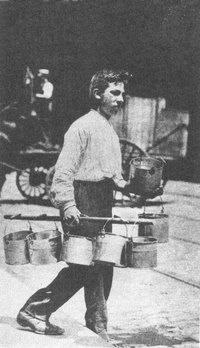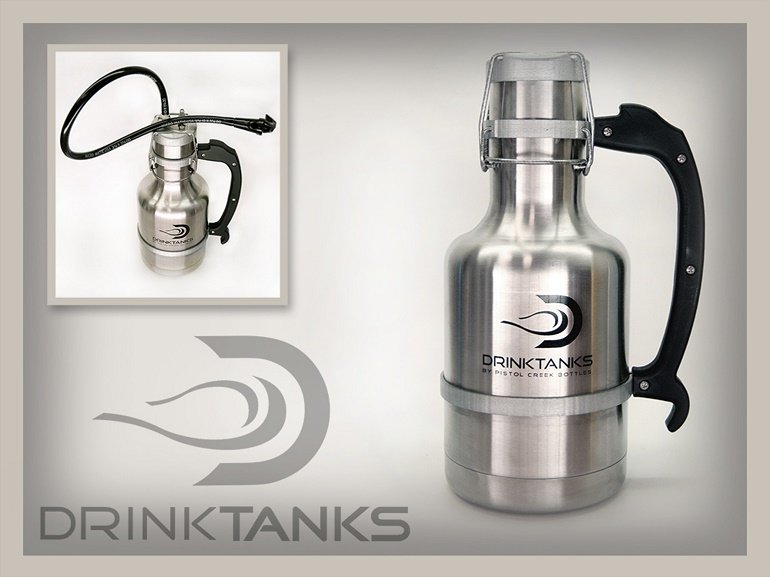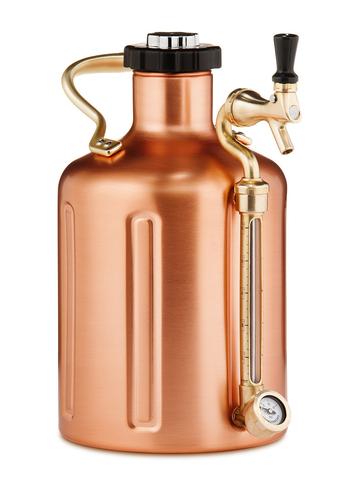Start 14-Day Trial Subscription
*No credit card required

Beer Growlers
Everything You Need To Know About Beer Growlers
With craft beer still booming, loyal connoisseurs need new ways to transport their precious liquid to and from destination breweries. Voila! The beer growler is here for your beer storage and transportation needs. So just what is a growler? Read on and discover everything you need to know about beer growlers.
Growlers are containers used to transport and store beer that is typically purchased from a retail store, restaurant, brew-pub or brewery poured from a keg through a tap system. They are often made from glass, stainless steel or ceramic materials, which help preserve beer for a period of time with minimal degradation. The preservation length can vary lasting from a couple of days upward to a couple of weeks or more depending on certain optional features available with some models. Preservation length is also determined by your retailer's ability to vacuum pump your growler with CO2 prior to filling it with your beer of choice.
Growlers afford the drinker the "straight from the tap" drinking experience that can be taken on the go. Straight from the tap is often a preferred drinking experience compared to beer from a can or bottle. Growlers come in a variety of shapes and sizes, which is fitting given the origin of the growler has its own varied roots.
For those unfamiliar with the growler’s lineage, here is a short history lesson.
One theory claims two-quart, galvanized pails were used as early as the late 19th century to transport beer between the local pub and home. As the beer sloshed and CO2 was agitated, a “growling” sound could be heard as gas escaped around the lid. In fact, “growler” as a term for this vessel first appeared in the July 1893 issue of Harper’s Magazine.
By the early 20th century a term, “rushing the growler,” emerged to describe how children would take a growler to a bar, have it filled, and then transport it to, most often, their father’s workplace in time for lunch. Variants of this story suggest that the workers would be so hungry by the time the growlers arrived, their stomachs were “growling.”
Here, a young lad "rushes the growler" to its destination – which was most often a father's place of employment.
In the same era, another story was that when “nickel beer” was the standard cost for a pint, those who wanted a pint to-go would use their two-quart growler but only have a pint poured into it. As often would happen, there would be a disagreement between the bartender doing the filling and guessing how much to pour and patron doing the buying, thus causing some “growling” between the two.
Between then and now there were several more iterations of the growler, including the modern-day, 64-ounce glass jug, which is credited to Charlie Otto, owner of Wyoming’s first draft-only microbreweries, Otto Brothers Brewery (now Grand Teton Brewing). In 1989, Charlie was looking for a way his patrons could bring his beer home, and it was his father who remembered the growlers from the time of his youth. Charlie stumbled upon half-gallon glass jugs, which were similar to moonshine jugs, and had his brewery’s logo silkscreened on the front, and the rest is recent history.
While the common glass growler is much the same as it was in 1989, growlers do continue to evolve, but each one’s purpose remains – transport beer from brewery/brewpub/bar to some other place, and keep beer from going bad for a reasonable amount of time. But how does that happen?
Bottling and canning lines are designed to fill their respective vessels with beer for longer shelf lives. With growlers, the expectation is consumption will follow within days, so fancy counter-pressure systems are not as necessary with filling a growler. However, a good brewery or beer bar will take care when filling a growler.
More common these days, if not mandatory, is to use a foot-long tube to bottom-fill growlers. This keeps the beer from being agitated on the long journey from the tap to the bottom of the vessel and releasing its CO2 prematurely. Some finer beer bars will go as far to purge the oxygen from a growler with CO2 before filling to reduce the risk of oxidation.
Growlers of beer will stay fresh for several days (some say up to 10 days) if left unopened. Once opened, however, leftover beer will be flat within 36 hours at best. If a growler is filled with a full counter-pressure system, it is possible for the beer to remain fresh for up to several months. Of course, beer in growlers is susceptible to the same perils as bottled and canned beers. Keep away from sunlight, store cold if possible, and store upright.
It should go without saying, but keeping growlers clean is very important. It is best to rinse them as soon as they are emptied, scrubbing with a long-handled brush if available, and allowed to dry upside down so no moisture is left sitting at the bottom.
Growlers have two very important benefits for a beer fan. One, they provide a way to source seasonal, limited beers that likely are not distributed. Secondly, the growler itself is something personal, as if a statement about one’s brewery allegiance or taste in art or one’s lifestyle. Growlers are used again and again. They travel, they get passed around, they get admired.
Handmade growlers, like this one from Carlburg Pottery, are growing in popularity.
In the burgeoning world of new growlers, there are ones that double as art pieces, like those handmade at Carlburg Pottery. This company’s commitment to making ceramic growlers, flasks, bottles, and cups stems from a movement to get away from mass-produced glassware, harkening back to vessels as they were before refrigeration. Ceramic growlers will keep beer colder longer, especially if set out at a party, and they protect the beer from being light-struck.
For the lovers of good beer and technology, uKeg makes a vacuum-insulated stainless steel growler with a pressure regulation cap that holds a small CO2 cartridge. Functioning like a very small keg, the growler will keep beer under pressure and fresh for up to two weeks. With this setup, there’s no need to drink all the beer in one night.
For the ultimate adventurists who need to bring beer outdoors, there are a myriad of choices. Boasting extreme durability and insulation, growler brands in this category include HydroFlask, Klean Kanteen, Stanley, Miir, and YETI. Most of these growlers are priced between $50-$100. Several beer enthusiasts have tested these brands for temperature and pressure retention and posted their results online.
A growler, or a collection of growlers, will open up a world of new beers being brought to new experiences. By design, a growler is beer-to-go, and where that beer goes is nearly limitless thanks to the availability of interesting and technologically-advanced growlers. However, if it is just one or two beer fans enjoying a dinner or a game and a growler, that is just fine too.
TWO GROWLERS TO CONSIDER
FOR BEER QUALITY PRESERVATION AND PORTABILITY: DrinkTanks Classic Growler
This growler functions as a personal mini keg with the help of DrinkTanks' auto-regulating keg cap. All DrinkTanks growlers are fully vaccuum insulated, so you can put either hot or cold liquids in it and it will keep them piping hot (for 12 hours) or fully chilled (for 24 hours). Learn More Here

FOR BEER QUALITY PRESERVATION AS A MINI-KEG: GrowlerWerks uKeg 128 Copper-Plated
The uKeg 128 pressurized growler available in a bright copper-plated finish for a true, old-fashioned brewery look. The uKeg 128 is a mini keg in the size of a full-gallon growler, keeps beer cold, fresh and carbonated for two weeks. On the go or at home. Durable, double-wall vacuum insulated stainless steel. CO2 regulator cap with customizable tap handle and gauge. Brass carrying handle. Includes two 16 gram CO2 cartridges. Learn More Here





Comments